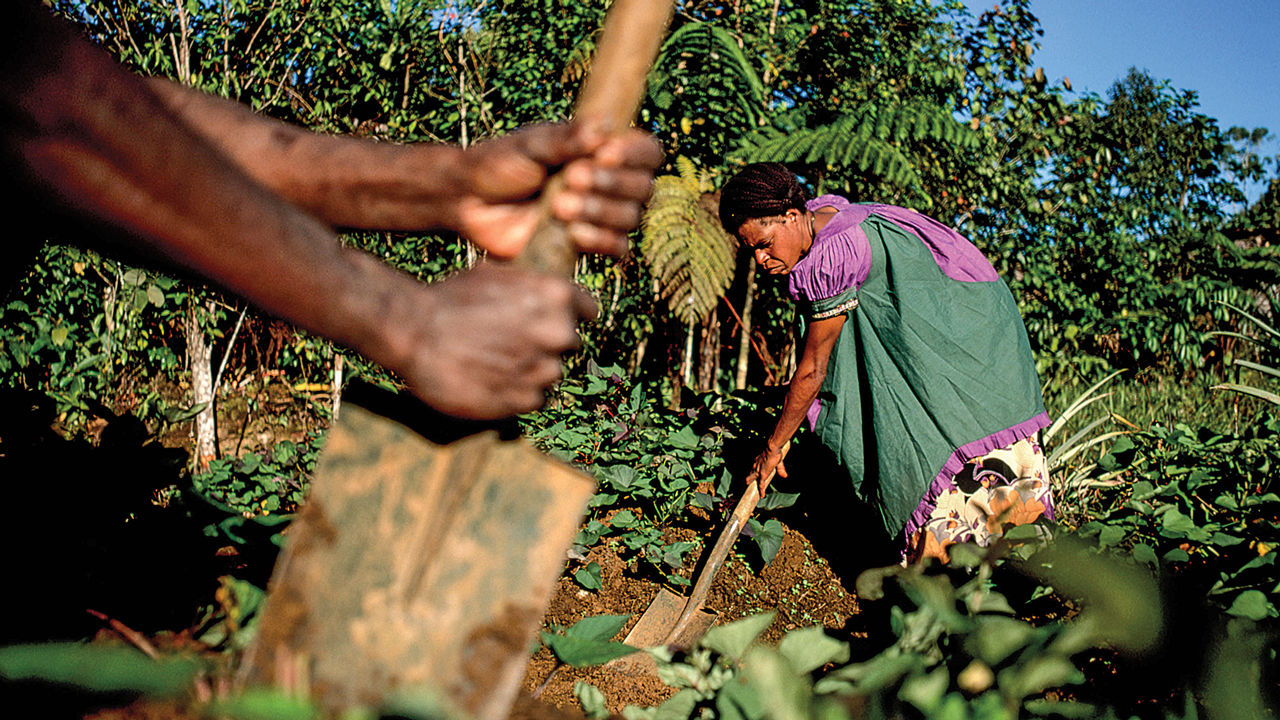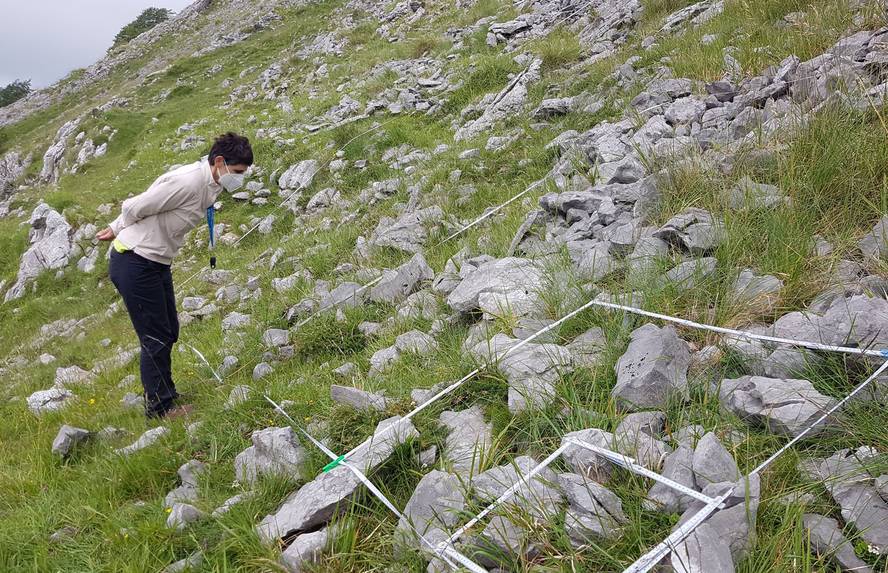The idea of bursting the world of biodiversity is based on a myth, according to critical scientists
- The transfer of wild development from vast areas of the Earth should contribute to redressing biodiversity loss and climate change, which has long been defended by the dominant ecological trend. On the contrary, some scientists have claimed that in a world where nature was richer, man also intervened for a long time. The debate on the idea of "Wilderness" is coming up again.

In the ELB Laborari trade union magazine, Mikel Hiribarren has summed up the debate between farmers and conservationists “Nature and agriculture, hand-in-hand”. It is a wilderness that environmental associations have long awakened around the world and that recently many leaders, even multinationals that damage the climate, have taken on the climate emergency, that is to say that in order to settle the massacres committed by the human being, large areas of the planet must be left wild.
The United Nations Organization has set itself the objective of restoring to nature a space as large as the territory of China, with a minimum of 1 billion hectares worldwide. It is true that the concept of wilderness is seen with different nuances by its promoters, but they are all based on an interpretation of prehistory: Until a few centuries ago, the Earth had vast areas without contact with humans, and the pristine forests enjoyed the greatest biodiversity. This is what has once again called into question seventeen scientists who have just published.
In the scientific journal Proceedings of the National Academy of Sciences (PNAS), Arle Ellis and 17 other environmental scientists, anthropologists and archaeologists have published People have shaped most of terrestrial nature for at least 12,000 years (“Man has modeled most of the nature of the earth at least in recent years”), restating his views against the formula “of wild biodiversity”. "There is growing evidence – written by Ellis and his colleagues – that human activity has produced lasting ecological benefits with its behavior by expanding new habitats to other species, increasing plant diversity, increasing hunting sustainability, performing important ecological functions in seed diffusion, increasing soil nutrients.."
And later on: “Hunter-gatherers, early farmers and pastors often shared the same areas and adjusted their appearance through numerous low-intensity survival practices: hunting, transhumance, residential mobility, use of fallow land for plant production, variety of crops and tree pruning. In this way, mosaics of varied, dense and fertile plots and new ecological communities were created. In many regions this mosaic landscape has lasted for thousands of years.”
Research published in the PNAS belies earlier modelling, which claimed that 82% of the Earth was savage 8,000 years ago. Ellis and kolege that before the invention of agriculture human intervention in nature had been neglected: “These models were so bad that archaeologists didn’t want to use them in their work.” From what archaeologists consider to be proven, it is found that 12,000 years ago, man intervened in three quarters of the area of the planet, in 95 per cent of the temperate forests and in 90 per cent of the tropical forests: “In most of the spaces we today consider natural, intact or savage there are signs of human intervention.” The border stands at 12,000 years, when the last glaciation was over, giving way to the nature we know today.

SETTLER PREJUDICES
Based on the types of anthropomas created by Abeja Ellis ("anthrome", an area with the same characteristics as human intervention), they have been classified into three categories: "wild" zones, that is, without human presence; "cultivated" zones, which support intensive human activities in less than 20% of the land surface; and anthropomas or "intensive", with more than 20% of agricultural habitats.
By tracing these three models into practice, for example, most of the Amazon rainforest is considered a cultivated antroma of the second part, although many mistakenly thought it was savage in itself. On the contrary, most of the rural areas of the world today are anthropomas or intensive habitats.
In prehistory, examiners have found that only 27.5 per cent of the Earth was totally wild about 12,000 years ago, while the remaining 72.5 per cent was occupied by hunter-gatherers and peasants, but without intensive land use. Today, on the contrary, savage land accounts for 19 per cent of the global land area, uncultivated man has been reduced to 30 per cent, while intensive use has been predominant, 51 per cent.
These data have subsequently been crossed with the richness of biodiversity and for many it is a surprise: if we look at the priorities set by current conservation policies, most areas rich in biodiversity are in areas traditionally cultivated by humans with non-intensive activities. This new approach leads us to a new understanding of the history of biodiversity. Thus, the loss of biodiversity is not primarily due to the recent incorporation of man into the wilderness, but to the intensification of land use in areas where human beings have long lived, caused by population growth, colonization, population displacement, intensive agriculture and the industrialization of urbanization. Intensification started at the end of the 19th century and has taken a historic leap especially since 1950.
The loss of biodiversity has taken important steps in each of the colonizations of history, both in China and in the Roman empires or in the colonization of America by Europeans. It is no coincidence that one of the chapters of the study "Decolonizing biodiversity" is called. Like in the Amazon, all over America, in Australia and in other areas -- settlers found supposedly wild areas because they were incomprehensibly humanized, that is, cultivated in a non-intensive way with different agricultural and harvesting models. The intensification caused by colonization, together with the disappearance of the local inhabitants with all their knowledge, led to the disaster of their biodiversity.
The discoloration of biodiversity within Europe will also be necessary. The Calapites have already begun, on the one hand, the public and private entities that intend to buy land to increase biodiversity and leave it wild, and on the other hand, the peasants who have been modeling these landscapes for years. Or should we say that the conflict is “between the forgotten street settlers who are part of nature and the indigenous peasants who lived integrated into nature”?

Eskola inguruko natur guneak aztertu dituzte Hernaniko Lehen Hezkuntzako bost ikastetxeetako ikasleek. Helburua, bikoitza: klima larrialdiari aurre egiteko eremu horiek identifikatu eta kontserbatzea batetik, eta hezkuntzarako erabiltzea, bestetik. Eskola bakoitzak natur eremu... [+]
Andeetako Altiplanoan, qocha deituriko aintzirak sortzen hasi dira inken antzinako teknikak erabilita, aldaketa klimatikoari eta sikateei aurre egiteko. Ura “erein eta uztatzea” esaten diote: ura lurrean infiltratzen da eta horrek bizia ekartzen dio inguruari. Peruko... [+]
Biologian doktorea, CESIC Zientzia Ikerketen Kontseilu Nagusiko ikerlaria eta Madrilgo Rey Juan Carlos unibertsitateko irakaslea, Fernando Valladares (Mar del Plata, 1965) klima aldaketa eta ingurumen gaietan Espainiako Estatuko ahots kritiko ezagunenetako bat da. Urteak... [+]
Nola azaldu 10-12 urteko ikasleei bioaniztasunaren galerak eta klima aldaketaren ondorioek duten larritasuna, “ez dago ezer egiterik” ideia alboratu eta planetaren alde elkarrekin zer egin dezakegun gogoetatzeko? Fernando Valladares biologoak hainbat gako eman dizkie... [+]

























